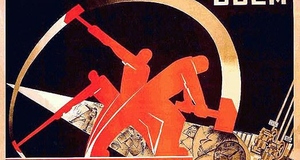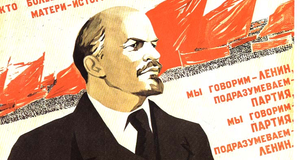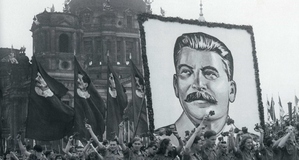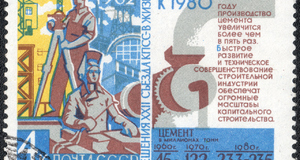The Soviet Nationality Policy in Central Asia
By
2013, Vol. 5 No. 03 | pg. 3/3 | « Legacies of the Soviet Nationality PolicyDespite the fact that the Central Asia republics were extensively a product of Moscow’s creation, it is ironic that at the present time these nations have adopted the artificial identities as their own. While tribal and clan loyalties still exist in society, they are not as significant as during the time before and during the Soviet Union, and nationalism has been growing. This is evident especially in Uzbekistan, where due to low levels of movement from rural to urban areas, the societal structure has not changed a great deal (Glenn 1999, pp. 131). Tajikistan lacks these tribal formations and confederations, which in Central Asia were useful for national cohesion of the state. The origins of Tajikistan with the Persian people could have facilitated the creation of a Tajik identity, but this would mean reliance on Persian political and cultural centres. However, the Persian influence on the Tajiks cannot be overemphasized, as while their cultures do share similarities, their histories diverged so much that Tajiks may find they have more in common with their fellow citizens of the CIS than anyone else at the present day. The national delimitation cut off Tajiks’ from their traditional cultural centres, such as Samarkand and Bukhara, placing them in Uzbekistan and thus instigating ongoing politically motivated discussions on the origins of these two cities. A significant Uzbek minority found itself in Tajikistan and as well as a big Tajik minority in Uzbekistan, hampering nation building (Hunter 2004, pp. 329). There are many other examples of titular nationalities being excluded from their titular territories. Many of these have led to irredentist claims throughout Central Asia, with the Ferghana Valley being the most prominent example (Glenn 1999, pp. 132).ConclusionThe USSR’s nationality policy was unlike any endeavour witnessed in history. It was full of contradictions, creating unity by reinforcing one another’s differences. Strengthening the Central Asian republics through indigenisation was a way to thwart the rising threat of pan-Islamism and pan-Turkism. It was thought that the simultaneous process of indigenisation and socialism would led to the development of a sovietskii narod, eventually undermining nationality and replacing it. However, Soviet policies set the stage for what would occur in the late eighties and early nineties. By bureaucratising and institutionalising nationalisms, after the collapse of the USSR the Central Asian republics were inevitably tempted to continue with the structure that was already in existence. Despite its faults, there were some positive aspects that are unprecedented in history, such as Soviet attempts at universal and standardized education. Along with this structure, the tribal and clan loyalties survived the collapse and continue to affect present-day politics in the region. Ironically, in most of the republics, one can now notice growing nationalism, despite that they were artificially and arbitrarily created in Soviet times. The ability of Islam to survive the anti-religion campaign and alongside an official Islamic establishment allowed it to permeate one’s understanding of nationality. The experience with over seventy years as republics in the Soviet Union left an indelibly lasting footprint upon their identities that have for the most part survived until present day. ReferencesAppleby, I. 2010, ‘Uninvited guest in the communal apartment: nation-formation processes among unrecognized Soviet nationalities’, Nationalities Papers, vol. 38, No. 6, 847-864. Blank, S. 1994, ‘Soviet Reconquest of Central Asia’, in Central Asia: Its Strategic Important and Future Prospects, ed. Malik, H., St. Martin’s Press, New York. Blitstein, P. 2006, ‘Cultural Diversity and the Interwar Conjuncture: Soviet Nationality Policy in its Comparative Context’, Slavic Review, Vol. 65, No. 2, pp. 273-293. Bohr, A. 1998 ‘Turkmenistan and the Turkmen’, in The Nationalities Question in the Post-Soviet States, ed. Smith, G., Longman, London. Bremmer, I. 1993. ‘Reassessing Soviet Nationalities Theory’, in Nations and Politics in the Soviet Successor States, eds. Bremmer, I. and Taras, R., Cambridge University Press, Cambridge. Bremmer, I. 1993. ‘Central Asia’, in Nations and Politics in the Soviet Successor States, eds. Bremmer, I. and Taras, R., Cambridge University Press, Cambridge. Coppieters, B. 1998, ‘Form and Content in Soviet and Post-Soviet Nationality and Regional Policies’ in Conflicting Loyalities and the State in Post-Soviet Russia and Eurasia, eds, Waller,M., Coppieters., B, Malashenko, A., Frank Cass Publishers, London. Fierman, W. 2009, ‘Identity, Symbolism, and the Politics of Language in Central Asia’, Europe-Asia Studies, Vol. 61, No. 7, 1207-1228. Fowkes, B. 2002, ‘Ethnicity and Ethnic Conflict in the Post-Communist World,’ Palgrave, New York. Gleason, G. 1997, ‘Uzbekistan: the politics of national independence’, in New States, New Politics: Building the Post-Soviet Nations, eds. Bremmer, I. & Taras, R., Cambridge University Press, Cambridge. Glenn, J. 1999, ‘The Soviet Legacy in Central Asia’, Palgrave, New York. Haghayeghi, M., 1995, ‘Islam and Politics in Central Asia’, Macmillan, London. Hirsch, F., 2005. Empire of Nations: Ethnographic Knowledge and the Making of the Soviet Union. Cornell University Press, Ithaca. Hughes, J. and Sasse, G., (2002). Ethnicity and Territory in the Former Soviet Union: Regions in Conflict. Frank Cass, London. Hunter, S. 2004, ‘Islam in Russia: the Politics of Identity and Security’, M.E. Sharpe, Armonk. Lubin, N.1991, ‘Implications of Ethnic and Demographic Trends’, in ‘Soviet Central Asia: The Failed Transformation’, ed. Fierman, W.,Westview Press Inc., Boulder. Martin, T. 2001. ‘Affirmative Action Empire: Nations and Nationalism in the Soviet Union, 1923-1939’, Cornell University Press, Ithaca. Smith, G. 1998 ‘Nationalities Policy’, in The Nationalities Question in the Post-Soviet States, ed. Smith, G., Longman, London. Soucek, S., 2000, A History of Inner Asia. Cambridge University Press, Cambridge. Suny, R.G. 1993. ‘The Revenge of the Past: Nationalism, Revolution, and the Collapse of the Soviet Union’ Stanford University Press, Stanford. Wixman, R. 1991, ‘Ethnic Attitudes and Relations in Modern Uzbek Cities’, in ‘Soviet Central Asia: The Failed Transformation’, ed. Fierman, W.,Westview Press Inc., Boulder. Zaslavsky, V. 1993. ‘Success and Collapse: Traditional Soviet Nationality Policy, in Nations and Politics in the Soviet Successor States, eds. Bremmer, I. and Taras, R., Cambridge University Press, Cambridge. Suggested Reading from Inquiries Journal
Inquiries Journal provides undergraduate and graduate students around the world a platform for the wide dissemination of academic work over a range of core disciplines. Representing the work of students from hundreds of institutions around the globe, Inquiries Journal's large database of academic articles is completely free. Learn more | Blog | Submit Latest in History |


















